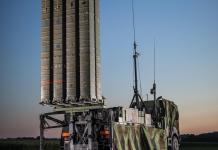In a big boost to India’s maritime surveillance, the country has successfully launched the Sindhu Netra satellite, aimed at tracking and identifying warships and merchant ships in the Indian Ocean Region.
It will also help India keep an eye on the South China Sea, the Gulf of Aden, and the African coast.
India, China Rivalry Not Over As Delhi, Beijing ‘Fight It Out’ For Global Diplomatic Clout
Launched using the Indian Space Research Organisation’s (ISRO) PSLV-C51 rocket from the Satish Dhawan Space Centre in Sriharikota in Andhra Pradesh on Sunday, the Sindhu Netra satellite has been developed by a team of young scientists from the Defence Research and Development Organisation (DRDO).
#PSLVC51 lifts off successfully from Satish Dhawan Space Centre, Sriharikota#ISRO #NSIL #INSPACe #Amazonia1 pic.twitter.com/38WNf5ciIo
— ISRO (@isro) February 28, 2021
Stunning glimpses of today's lift-off#PSLVC51 #Amazonia1 #NSIL #INSPACe pic.twitter.com/MQJzAROxaV
— ISRO (@isro) February 28, 2021
According to reports, the satellite will also monitor movements on land areas such as the Ladakh region which had witnessed a nine-month-long standoff between Indian and Chinese troops before disengagement was announced last month. It is the first in the series of such satellites which would enhance India’s surveillance capabilities.
The Indian security agencies had been stressing the need for at least four to six dedicated satellites to keep a closer eye on the activities of the Chinese military both near the Indian territory as well as in its depth areas all along the 4,000 kilometer Line of Actual Control (LAC).
Besides, India wants to closely monitor the activities in the Indian Ocean, where China has been making relentless attempts to increase its influence. Since India claims to be a net security provider in the region, experts opine that such satellites will serve as strategic assets for India.
In the 2020-21 financial year, ISRO had aimed at launching 10 Earth observation satellites including three communication satellites and two navigation satellites.
In 2019, India had launched RISAT (Radar Imaging Satellite) – 2BR1, which marked the stationing of a quartet of satellites in space to ensure its borders are protected.
The RISAT satellite was augmented after the 26/11 Mumbai terror attack. Currently, ISRO’s Cartosat satellites, which are optical earth observation satellites, have been deployed for resource management, defense services, and monitoring.
The RISAT is a part of a series of radar imaging reconnaissance satellites built by ISRO aimed at providing all-weather surveillance using synthetic aperture radars (SARs). It can capture high-quality images than the optical sensor radars incorporated into an earlier generation of satellites.
Follow EurAsian Times on Google




